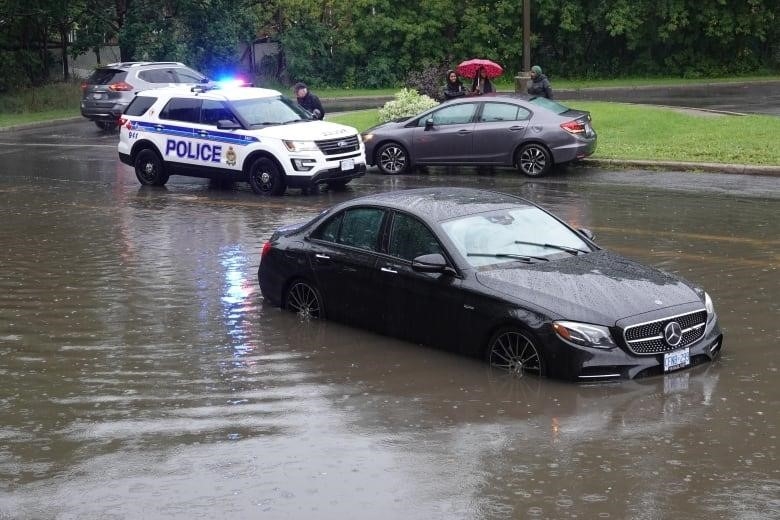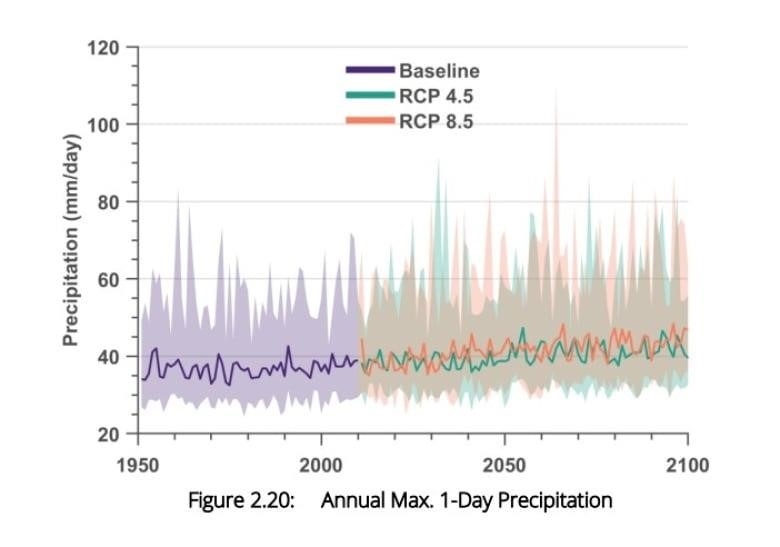Modern stormwater systems are not made to handle very heavy rain
Heavy rain like the kind that hit Ottawa last week and flooded roads and basements could push planners toward a natural solution called “the sponge city.”
More than 75 millimeters of rain fell on the nation’s capital Thursday afternoon. The downpour was so heavy that drainage systems were temporarily overwhelmed.
Riley Brockington, a council member for the River ward, said, “We had a three-hour storm, which is something I’ve never seen before.”
He said that many people said they thought their storm drains were clogged. They ran all the way to the end of their driveways, but there was nothing there—not even a leaf.
“It’s like when people try to get on the Queensway during rush hour. Brockington said, “The Queensway can only handle so many cars before people have to slow down or stop.”
- After flash floods cause sewage “mayhem,” a flood of damage claims are coming in.
- After the flash floods, people and council members are worried about the weather.
He said that even the best and most modern culverts would not have been able to handle such an unusual amount of rain. Instead, he said, the city’s system worked exactly as it should have.
But since the city itself predicts that it will rain more and harder, some experts are calling for a change in strategy.

Natural defenses are los
Alexandra Lesnikowski, who runs Concordia University’s Climate Change Adaptation Lab, said that this is a problem in a lot of big Canadian cities that were built to handle rapid urban growth in the middle of the last century.
Lesnikowski said that since extreme weather events are happening more often, upgrades are a big economic challenge that will need to be planned for.
She said, “They will have to find a way to spread out the cost of updating their stormwater and sewer system so that it is affordable for them to do.”
- Experts say that Montreal needs to build greener and smarter to deal with the coming floods.
Flooding can force cities to make hard decisions about whether or not it is better or even possible to live in areas that are prone to these kinds of disasters.
Usman Khan, an expert in urban hydrology at York University, said that the main problem is that roads, rooftops, and parking lots stop the water cycle and make it harder for excess water to be absorbed, which leads to flooding.
“The idea behind a sponge city is to try to re-create this natural behavior that we’ve changed,” he said.
“Adding green areas like green roofs, rain gardens, and vegetated swales can temporarily hold water, like a sponge does when it rains, and then slowly release it over time.”
It’s something the city has thought about before, like when it gave people money to build a rain garden or a driveway made of permeable concrete, or when it added bioswales, which are planted channels that can hold water, to streets in Old Ottawa South and Sandy Hill.

Goes “hand-in-hand” with making something stronger
Even though the ideas may seem to go against Ottawa’s plans to build up downtown areas and deal with a growing housing shortage, some experts say they can work together.
Also, they can be expensive, but so are the other options.
“If you look at flooding, say in Canada over the last 10 or 20 years, we see that every time something big happens, it’s called the most expensive natural disaster,” said Khan.
-
A report says that due to climate change, maintaining pipes and sewers could cost cities an extra $700 million a year.
“It’s not just infrastructure to protect against floods. It’s not just about managing storm water. It gives people access to green space, which has many benefits.”
Lesnikowski says that the problem can get worse if cities keep growing and take away natural flood plains.

Flood risks set to increas
Flood damage is already a problem that everyone knows about.
Last year, city staff thought it was one of the most important climate-related risks, and they called the need for more maintenance on stormwater infrastructure a possible vulnerability.
The city’s most recent draft of its infrastructure master plan said, “All stormwater systems are built for a certain level of rainfall.”
“As a result, the capacity of any storm system will always be exceeded by a heavy rainstorm that is worse than what was planned for.”
The overall plan, which will be approved by the council at this meeting, went on to say that adding more people to downtown areas does put more pressure on the systems that are already in place.
Brockington, who is the chair of the emergency services committee and a member of the environment committee, said that developers must show that their plans won’t push infrastructure past its limits or pay to improve them.
But effects that happen over time or that get worse may be harder to spot.
Brockington said that council will keep trying to find an answer to a question that many people are asking: “How do we protect the city?” There is clear evidence that weather-related risks are changing, so Brockington said council will keep trying to find an answer.
